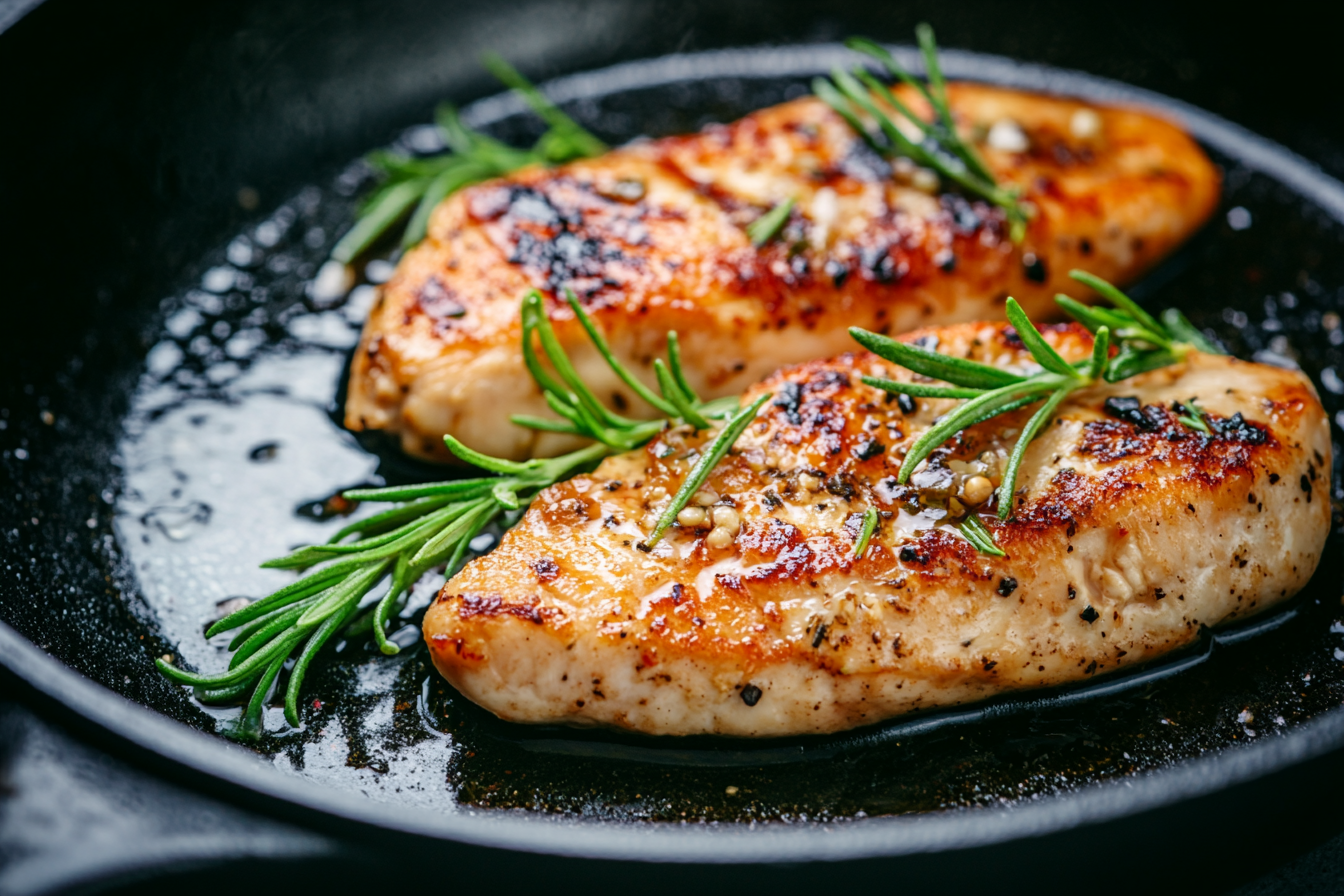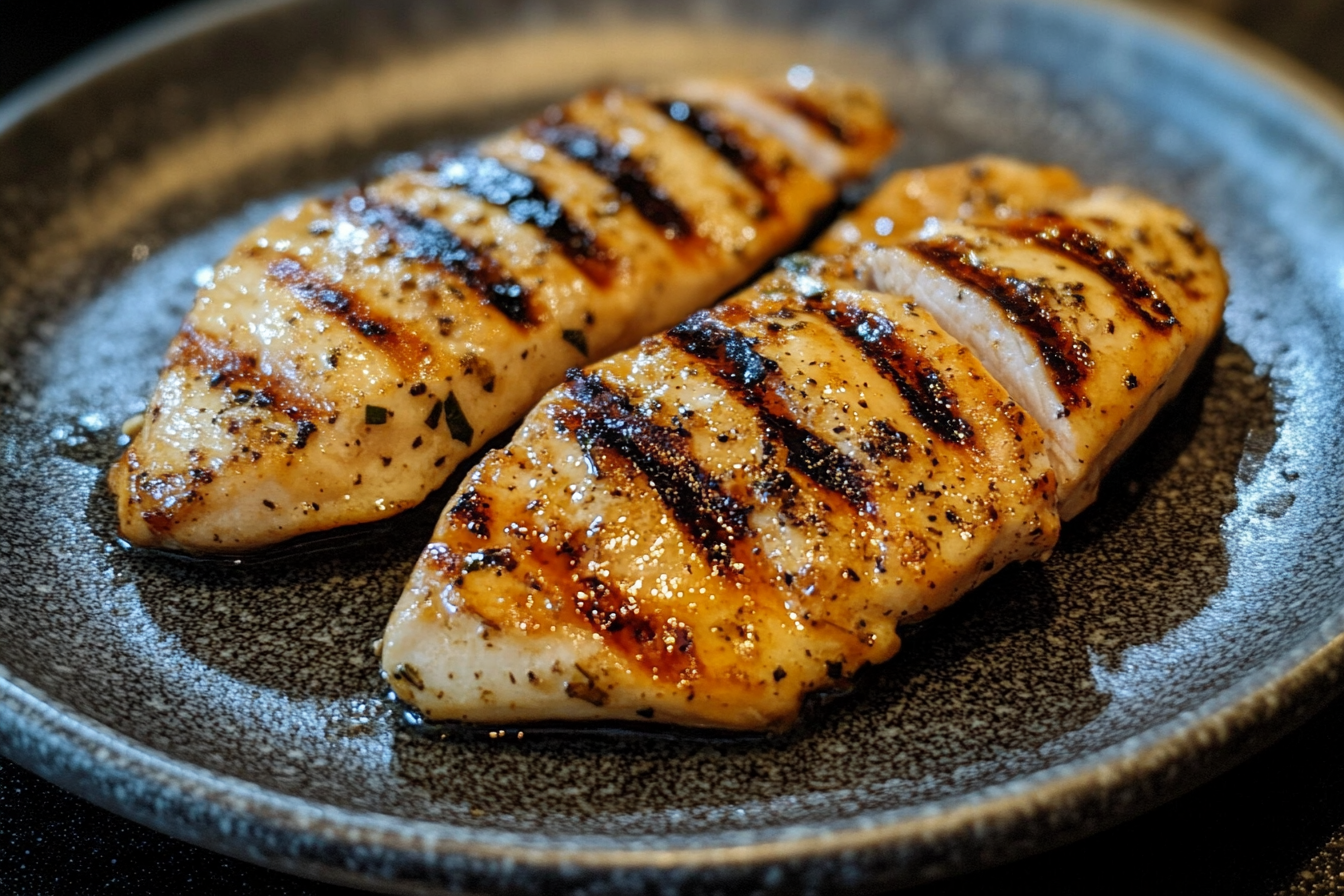A chicken fillet is a term often used to describe a boneless and skinless piece of chicken, most commonly taken from the breast of the bird. Chickens fillets are prized for their lean texture, high protein content, and versatility in cooking. They can be cooked in numerous ways, making them a staple in many kitchens around the world.
A Closer Look at Chicken Fillet
The fillet is not only a culinary favorite for its taste but also for its nutritional benefits. It is a rich source of protein, vitamins, and minerals, making it a go-to choice for health-conscious individuals. Moreover, its neutral flavor profile makes it highly adaptable to different cuisines and cooking techniques, ranging from grilled dishes to stir-fries and salads.
Chickens fillets can be easily seasoned, marinated, and paired with various vegetables, grains, and sauces, making them a reliable and nutritious option for any meal. If you’re a fan of delicious yet simple dishes, consider checking out this Chicken Fillet Recipe for inspiration.
Why is Chicken Fillet So Popular?
There are several key reasons why chicken fillets have become a staple ingredient in kitchens worldwide. These reasons include:
- Low in Fat: Chicken fillets are naturally lean, meaning they contain very little fat, making them a healthier option compared to other cuts of meat like chicken thighs or red meat.
- High in Protein: With an impressive protein content, chickens fillets are ideal for those looking to build muscle or maintain a high-protein diet.
- Quick and Easy to Cook: Chickens fillets can be prepared in a variety of ways they can be grilled, fried, baked, or even poached.
- Versatility: Due to its mild flavor, chicken fillet pairs well with a wide array of ingredients and can be used in anything from salads to hearty, protein-packed dinners.
Chicken fillets also fit perfectly into various diet plans, including the keto, paleo, and low-carb diets. Their low-calorie content makes them an excellent option for people aiming to lose weight or stay fit. Additionally, they’re a great choice for anyone following meal prep plans.
Nutritional Profile of Chicken Fillet
One of the most important aspects of a chicken fillet is its nutritional profile. Chickens fillets are highly regarded as a lean source of protein, making them ideal for those seeking to balance their diets while keeping calorie intake in check. A typical 100g serving of chickens fillet provides:
- 165 calories
- 31 grams of protein
- 3.6 grams of fat
- 0 grams of carbohydrates
This makes chicken fillet particularly valuable for individuals following a high-protein, low-fat diet. It is also an excellent source of B vitamins such as niacin (B3) and pyridoxine (B6), which are important for metabolism and maintaining energy levels. For those looking for more details on the nutritional benefits, this Chicken Fillet Nutrition Guide offers further insight.

Macronutrients
The macronutrient breakdown of chicken fillet reveals why it’s such a popular choice for athletes and fitness enthusiasts. Protein plays a critical role in muscle growth and repair, while the low-fat content ensures that it fits into low-calorie diets. Unlike other protein sources such as red meat, chickens fillet contains significantly less saturated fat, making it a heart-healthy option.
Additionally, the fillet is devoid of carbohydrates, which makes it particularly suited for those on a keto or low-carb diet. Its versatility allows it to be incorporated into meals without adding unwanted calories from fats or carbs.
Health Benefits of Chicken Fillet
Aside from its nutritional value, chicken fillets offers several important health benefits:
1. Weight Management
Chicken fillet is an excellent food choice for individuals trying to lose weight or maintain a healthy weight. Due to its high protein content and low-fat levels, chicken fillets keeps you fuller for longer, reducing the likelihood of overeating. The lean nature of the meat also ensures that you consume fewer calories compared to fattier cuts of meat.
2. Supports Muscle Growth
Protein is the building block of muscle, and chicken fillet is a complete protein source. This means it contains all nine essential amino acids required for muscle growth and recovery. Whether you’re an athlete or just someone looking to build muscle, consuming chicken fillets regularly can support your fitness goals.
3. Heart Health
Chicken fillet is low in saturated fat, which helps to lower cholesterol levels and reduce the risk of heart disease. Opting for lean meat like chicken fillet over fattier cuts of beef or pork can have long-term benefits for cardiovascular health.
4. Boosts Metabolism
Chickens fillet is an excellent source of B vitamins, particularly niacin and vitamin B6. These vitamins are critical in supporting the body’s metabolism and helping convert food into energy. This boost in metabolism can further aid weight loss and help improve energy levels throughout the day.
Culinary Uses of Chicken Fillet
The chicken fillet is perhaps one of the most versatile pieces of meat available. Its mild flavor makes it the perfect blank canvas for a variety of dishes, whether you prefer your chicken grilled, baked, fried, or sautéed. Here are some of the most common ways to use the fillet in the kitchen:
Grilled Chicken Fillet
Grilling is one of the simplest and healthiest ways to cook a chicken fillet. It requires minimal oil, and the high heat locks in the moisture, ensuring the chicken remains juicy. A grilled chicken fillet can be seasoned with herbs and spices, and it pairs wonderfully with a salad or roasted vegetables.
Chicken Fillet Stir-fry
For a quick and easy meal, consider slicing a chickens fillet and adding it to a stir-fry. Combine the chicken with fresh vegetables like bell peppers, broccoli, and snap peas, and stir-fry with soy sauce, garlic, and ginger. This meal is both delicious and nutritious, making it a perfect option for lunch or dinner.
Baked Chicken Fillet
Baking a chicken fillet is another great method for preparing a healthy, flavorful meal. You can marinate the chicken beforehand for added flavor or coat it with breadcrumbs for a crispy texture. Baked chicken fillet pairs well with rice, quinoa, or a vegetable medley.
Chicken Fillet Sandwiches
Chicken fillet sandwiches are popular in many cultures. For a lighter version, you can use grilled or baked chicken fillets as the base, layering them with lettuce, tomatoes, onions, and a whole grain bun. Add some mustard or yogurt-based sauce for extra flavor without the calories.
For a unique twist, try adding your fillet to this Brisket Sandwich Recipe, a deliciously smoky and hearty meal.
Chicken Fillet in Different Cuisines
Across the world, chicken fillet is a common ingredient in various cultural dishes. Below are a few examples of how the fillet is used in different cuisines:
American Cuisine
In the United States, grilled chicken fillet is a popular ingredient in salads and sandwiches. It’s often paired with flavorful sauces like barbecue or ranch and served with sides such as potato wedges or coleslaw.
Additionally, chicken fillet can be found in Southern dishes like fried chicken sandwiches or smothered in gravy over biscuits.
Asian Cuisine
In Asian countries, chicken fillet is frequently sliced thin and used in stir-fries, curries, and soups. For instance, in Thai cuisine, the fillet is often paired with coconut milk and red curry paste to create spicy, flavorful dishes. It’s also used in Chinese stir-fry dishes, where it is combined with soy sauce, vegetables, and noodles.
For a more detailed explanation of Asian recipes, you can explore the Capellini Pasta Dish that pairs well with light and healthy the fillet.
Mediterranean Cuisine
In Mediterranean cooking, grilled chicken fillet is frequently marinated with olive oil, lemon juice, garlic, and herbs. These flavorful marinades give the chicken a tangy, savory flavor. Chicken fillet is commonly served with hummus, tabbouleh, or roasted vegetables.
How to Choose and Store Chicken Fillet
Selecting the right chicken fillet is essential to ensuring that your dish turns out delicious. When shopping for chicken fillets, follow these guidelines:
Choosing
- Look for fresh, pink-colored fillets with minimal fat. The fillet should feel firm to the touch.
- If buying frozen fillets, ensure they are properly sealed and not covered in ice crystals, as this can indicate freezer burn.
- Opt for organic or free-range chicken when possible, as it tends to have a better flavor and fewer chemicals.
Storing
- Store fresh chickens fillets in the refrigerator and use them within two days of purchase.
- If you need to store chicken for longer, place the fillets in a freezer-safe bag and store them in the freezer for up to six months.
- Always thaw frozen chicken in the refrigerator rather than at room temperature to avoid the growth of harmful bacteria.
To learn more about safely storing chicken and preventing freezer burn, visit this guide.

Cooking Techniques
1. Grilling
Grilling a fillet gives it a slightly smoky flavor and a charred exterior, while keeping the interior moist and tender. This method is perfect for summer barbecues or light lunches.
- Preheat the grill to medium-high heat.
- Season the chicken with olive oil, salt, and pepper.
- Grill for about 6-8 minutes on each side or until the internal temperature reaches 165°F (75°C).
2. Baking
Baking a chickens fillet is an excellent way to lock in moisture without adding extra fat. You can also bake the chicken with vegetables for a complete meal in one pan.
- Preheat the oven to 400°F (200°C).
- Season the chicken with your favorite herbs, such as rosemary and thyme.
- Place the fillets on a baking tray and cook for 20-25 minutes, until the internal temperature reaches 165°F (75°C).
3. Frying
For a crispy, indulgent meal, pan-frying chickens fillet is a great option. Use a small amount of oil to prevent sticking and cook until golden brown.
Frequently Asked Questions (FAQs)
1. What is the difference between chicken breast and chicken fillet?
While both come from the same part of the chicken, a chickens fillet is a thinner, boneless portion of the breast that has been carefully trimmed. Chicken breasts are thicker and may include the rib bone.
2. How long can you store chicken fillet in the refrigerator?
Fresh chickens fillet should be used within two days if stored in the fridge. For longer storage, freezing is recommended.
3. How do I cook a chicken fillet for maximum flavor?
Marinate the chicken for at least 30 minutes before cooking. Grill or bake the fillet to lock in moisture and create a flavorful dish.
4. Is chicken fillet a healthy option?
Yes! Chickens fillets is low in fat, high in protein, and packed with essential nutrients, making it a great addition to any balanced diet.
5. How many calories are in a chicken fillet?
A 100g serving of the fillet contains around 165 calories, making it a low-calorie option perfect for weight loss and healthy eating.
Conclusion
In summary, the chicken fillet is one of the most versatile, nutritious, and popular cuts of chicken. Its lean, boneless nature makes it a perfect fit for a variety of culinary dishes and dietary preferences. Whether you are looking to maintain a healthy lifestyle, build muscle, or simply enjoy a delicious meal, the fillet offers an ideal balance of low fat and high protein.
Thanks to its ease of preparation, it has become a staple in kitchens across the world, from grilled chicken salads in American cuisine to spicy stir-fries in Asian cooking. Moreover, it fits into many diet plans, including low-carb, keto, and paleo diets. By choosing high-quality fillets, storing them properly, and utilizing a range of cooking techniques like grilling, baking, or frying, you can create flavorful and healthy meals.
From supporting weight management to enhancing muscle growth, the health benefits of chickens fillet are clear. Whether you’re cooking for a quick family dinner or experimenting with global cuisines, chickens fillet remains an essential, nutrient-packed ingredient for everyday cooking.

